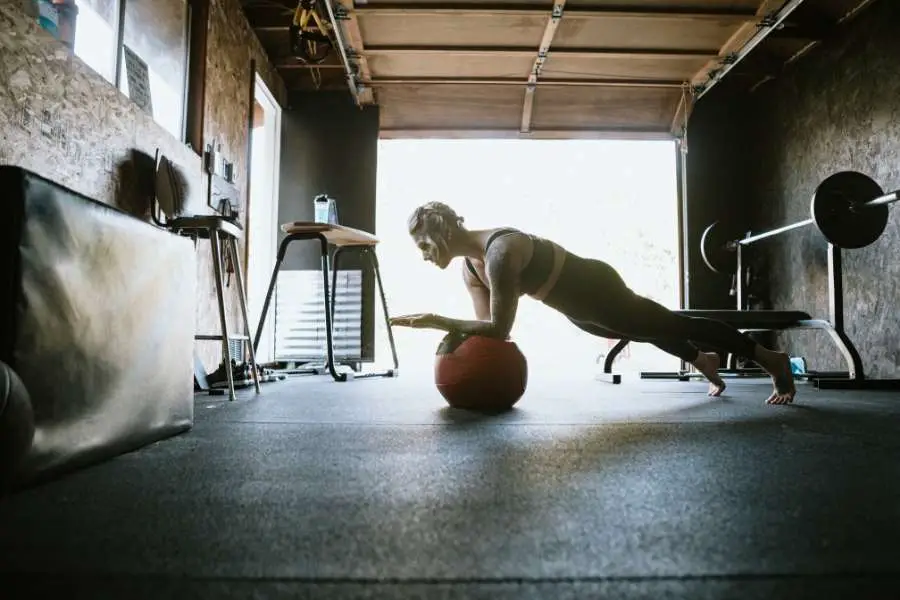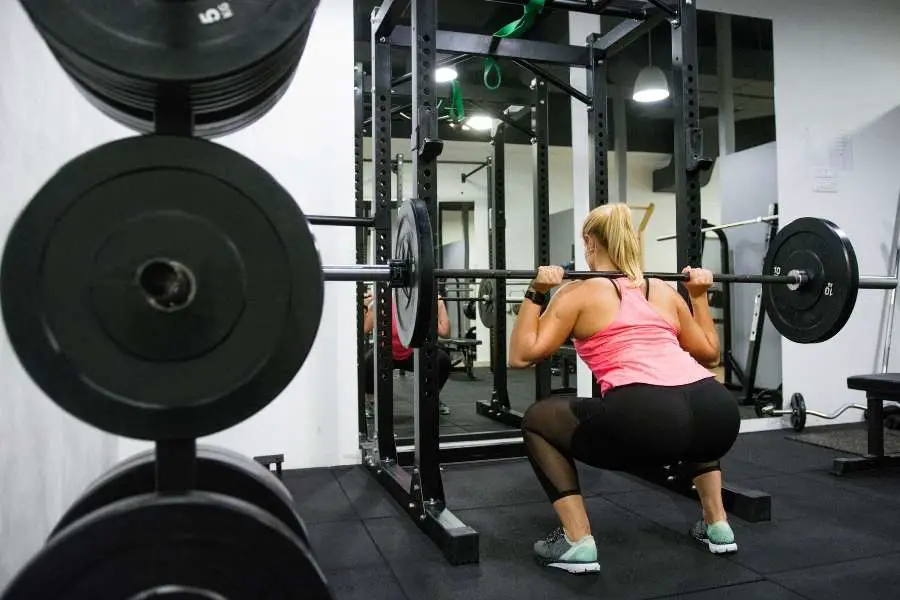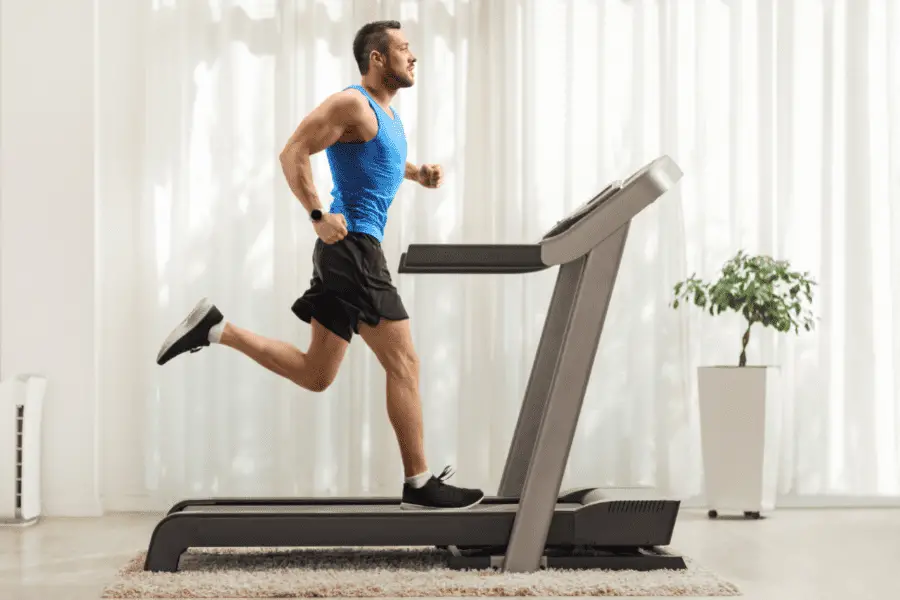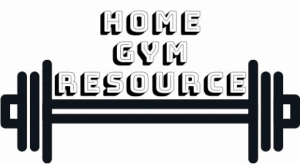The first question after looking into if a garden shed could be your new gym is probably; How big should it be? For me the answer is 8′ x 10′ but your goals could be different from mine. Here is a guide to help you decide which size shed is right for you. I’ve spent quite a bit of time with a floor planner to make the most efficient yet usable home gym layouts that fit in a shed.
The best size mainly depends on what you actually want to do. Different workout styles require different equipment which changes the size requirements. Here are the best shed sizes for a few of the most common home gym setups;
As you can see, different goals require differently-sized sheds. Keep reading to find out what the size requirements for the different components are.
Contents
How Big Should a Gym Shed Be For Your Workout Style?
Which size shed you need really depends on your workout style. A bodyweight workout requires a lot less space than if you want a full gym setup with separate machines. Let’s take a look at a few common home gym setups and how much space they require.
Have more questions about gym sheds? Click here to find the most important considerations.

Free weights Gym Shed Size
Many home gyms will have some kind of free weights setup. For many home gyms that’s the only thing they have. And for good reason; with free weights, you can train for so many goals. Most gyms that have a setup with only free weights can also be used for bodyweight exercises or changed to be that way with some minor changes.
What do you need for a free weights gym?

With those pieces of equipment, you can train any muscle in your body. There are a few smaller things you could add to make your gym a bit more versatile but the items above are by far the most important and the things that take up all the space. Most of the optional additions are pretty small.
So how much space do you really need to set all of that up and actually be able to use it? Since I’ve already written a whole post about that, I’ll link to that post here. (Click)
Here is the summary of that post: To be able to lift weights at home you need at least 64ft2 (8’ x 8’) (244 cm x 244 cm) of floor space. That amount of space is enough to perform all the basic lifts and includes a power rack, barbell, weights, and dumbbells.
Keep in mind that that is the bare minimum. You’ll have some more breathing room if you go for 8’ x 10’ (244 cm x 305 cm). Alternatively, you could get a shed with large doors that open up so you can use the outdoor space.
Which Size Shed For a Free Weights + Cardio Gym?
Maybe you want to build a more well-rounded body. You’ll have to add some type of cardio machine.
You’ve got quite a few choices for cardio machines;
All of those have different space requirements. The rowing machine and exercise bike are the most compact machines out of this list.
Here is how much space you need to put the following machines in your gym AND use them. These are average sizes.
Since we already need 8’ by 8’ for a free weights setup, we just have to make one side of the shed a little longer. Adding 3 feet of length will allow you to set up a treadmill, elliptical trainer, or exercise bike. A rower might be a bit longer but having 3 feet extra is likely enough because you can fold away most rowers.
8’ + 3’ = 11’. That would mean you need a shed that measures 8’ by 11’. In practice, those are quite rare. You’ll have an easier time finding one that is 8’ by 12’.
Some cardio machines are foldable. This means you can fold them away when not in use. This is especially common on treadmills and rowing machines. This saves a ton of space since you’re not going to use the treadmill at the same time as the power rack.
That means you can get away with a smaller shed.
Cardio + Multi Gym Space
Maybe you don’t need free weights but you do want to build some muscle and improve your cardiovascular health. In that case, a cardio machine plus multi-gym is a great option.
A multi-gym is a big machine that allows you to do many different exercises. They are big but more space-efficient than separate machines.
We’ve already looked at cardio machines above. So let’s take a closer look at how much space you need for a multi gym;
A large multi-gym like the Body-Solid F500 will need about 6’ by 8’ of floor space. A smaller multi-gym will need a bit less space. Combined with a cardio machine, you’ll need a shed that measures 8’ by 10’ to fit everything you want. If you want to fit a rowing machine, a 10’ by 10’ shed would be more suitable.

Suggested post: How much floor space do you need for a multi-gym?
Bodyweight Workout Garden Shack
Finally, let’s look at how much space you need in your shed to do bodyweight exercises. This can mean muscle-building exercises but also things like yoga.
There are many different bodyweight exercises and not all of them require the same amount of space. Many of them don’t need all that much space. You just need the space to stand up and bend over or lay down and spread your arms a little.
If you’re a person of average height, you can use a shed that measures 6’ by 8’ and still have some space left over for storage.
For some bodyweight exercises, you need an accessory like a pull-up bar or dip handles. These items don’t require a lot of space so you’ll still be fine with the 6’ by 8’ shed mentioned above.
With this amount of space, you can do all the bodyweight exercises, yoga, and Pilatus you want as well as add some resistance bands and/or kettlebells. Resistance bands and kettlebells don’t really require any extra space in your shed.
Summary
To summarize, here is what size shed you should look for, for your particular goal;
If your situation isn’t exactly listed above, I’m sure you can figure out how much space you need since I’ve named space requirements of the separate parts in the post above.
Gym Shed Height
Above I’ve mostly talked about the necessary floor space. However, height is also a pretty important measurement to keep in mind when selecting the right shed for your needs. Try to find/build one where the ceiling is at least 7’ tall.
How high should your home gym ceiling be?
This will allow you to do pull-ups, shoulder presses, and the vast majority of other exercises without hitting the ceiling. If there are a few roof beams in the way, you could work around them as long as the ceiling is a bit higher. Just make sure your power rack fits.
7’ high ceilings are good, 8’ is better. Also, sheds usually have A-frame roofs. So make sure what the quoted ceiling height is referring to. Is it just the highest peak of the roof or the bottom of the A?

